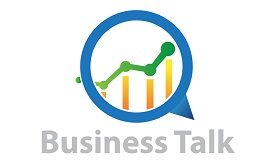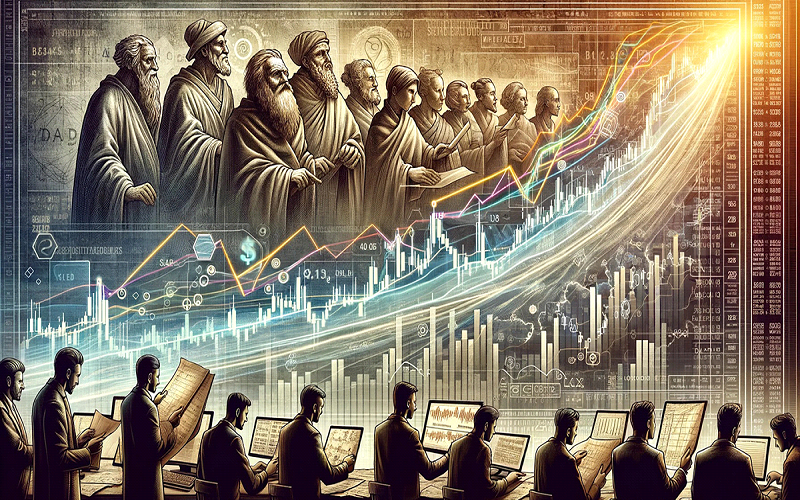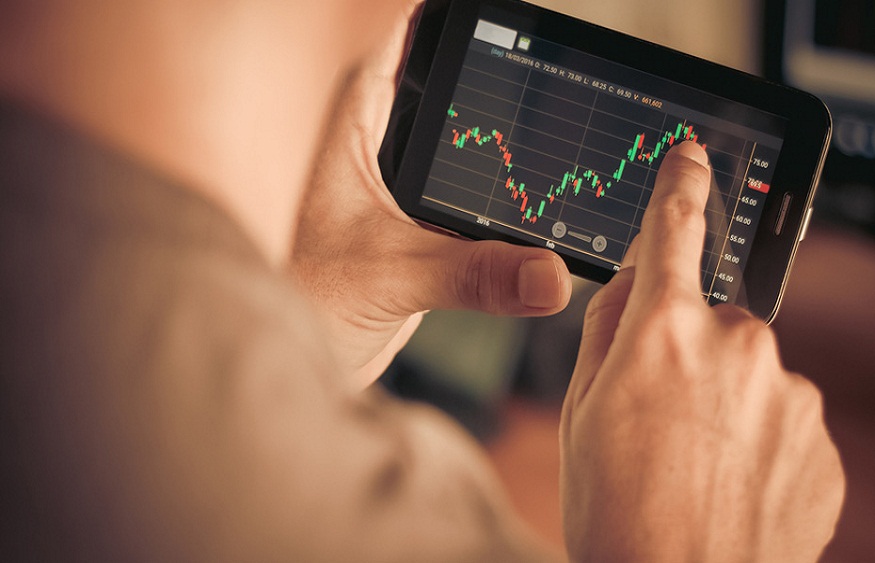Technical analysis, a cornerstone in the trading world, is the art and science of predicting future market movements based on historical price patterns and volume data. Its significance in Forex trading cannot be overstated, as it equips traders with the tools to make informed decisions in a market that is as vast as it is volatile. The methodology behind technical analysis has been meticulously documented in numerous technical analysis books, such as “Technical Analysis of the Financial Markets” by John J. Murphy and “Japanese Candlestick Charting Techniques” by Steve Nison, which have served as bedrocks of knowledge for traders worldwide. These books, among others, lay the groundwork for understanding market dynamics and the psychological aspects that drive market trends.
The aim of this article is to journey through the evolution of technical analysis in the Forex market. We will uncover how this discipline has transformed from rudimentary charting techniques to the sophisticated, algorithm-driven analysis that characterizes the current trading landscape. By tracing its development, we hope to provide insights into how technical analysis has adapted to technological advancements and changing market conditions, remaining an indispensable tool for Forex traders seeking to navigate the complexities of the global currency markets.
The Roots of Technical Analysis
Technical analysis, a cornerstone of market speculation, has roots that extend deep into history, long before the advent of the modern financial markets as we know them. Its principles can be traced back to ancient trade routes, where merchants would use early forms of charting to predict commodity prices, thus determining the most auspicious times to buy or sell. The formalization of these techniques, however, began much later, most notably with the development of the Dow Theory in the late 19th century. Charles Dow, co-founder of Dow Jones & Company, is often hailed as one of the early pioneers of technical analysis. His contributions laid the groundwork for what would evolve into a comprehensive system of analyzing financial markets based on price movements and patterns rather than the intrinsic value of assets.
Dow’s theory proposed that markets follow discernible trends and patterns that, once understood, can be used to forecast future market movements. He introduced concepts such as the primary trend, secondary movements, and the significance of volume, which remain fundamental to technical analysis today. This early work sparked a wave of interest and development in the field, leading to the creation of numerous charting methods and technical indicators designed to better understand and predict market behavior.
The period following Dow’s pioneering work saw a flurry of activity and innovation in technical analysis. In the early 20th century, figures like William Delbert Gann and Ralph Nelson Elliott introduced new theories and methods, such as Gann’s use of geometric angles and Elliott’s wave theory, further enriching the discipline. These methodologies sought to offer traders and investors tools for navigating the complexities of market psychology and price action, laying the foundation for the technical analysis practices used in today’s Forex markets.
As technical analysis continued to evolve, so did its applications, expanding from stocks and commodities to include the burgeoning Forex (foreign exchange) market. The unique characteristics of the Forex market, such as its 24-hour operation, global scale, and liquidity, provided a fertile ground for the application and further development of technical analysis principles. Early pioneers and their foundational theories have not only survived the test of time but have also become integral to the strategies of countless traders across the globe, influencing how market participants interpret price movements and make trading decisions in the ever-changing world of Forex trading.
The Pre-Computer Era
Before the digital revolution transformed every facet of trading, technical analysis in the Forex market, much like in other financial markets, was a painstakingly manual process. Traders relied on paper charts, plotting price movements with a pencil and ruler, to forecast future market behavior. This era, characterized by the absence of real-time data and computer-generated algorithms, demanded a high degree of skill, patience, and dedication.
The primary tools of the trade were the chart types, each offering a unique perspective on market movements. Candlestick charts, with their origins in 18th-century Japan, were pivotal for traders, providing detailed information about price movements within a specific timeframe. These charts, illustrating open, high, low, and close prices, offered insights into market sentiment and potential reversals, making them invaluable for decision-making. Bar charts, another staple of the era, presented similar information in a more simplified form, allowing traders to assess price movements at a glance.
Despite the effectiveness of these charting methods, the pre-computer era was fraught with limitations and challenges. The manual compilation of data was not only time-consuming but also prone to errors. Traders had to wait for the end of the trading day to access price information, significantly delaying analysis and decision-making. This lag in information could lead to missed opportunities or the inability to react swiftly to market changes, a critical disadvantage in the volatile Forex market.
Moreover, the scope of analysis was inherently limited by the amount of data one could realistically chart and interpret manually. Complex analysis or the examination of multiple currency pairs simultaneously was virtually impossible to manage efficiently. This limitation constrained traders to focus on a narrower market segment, potentially overlooking broader market trends and opportunities.
Despite these challenges, the pre-computer era laid the foundational practices of technical analysis in Forex trading. The reliance on manual charting cultivated a discipline among traders to closely observe and interpret market patterns and trends, a skill that remains invaluable even in today’s technologically advanced trading environment. The ingenuity and resilience of traders during this time underscored the enduring importance of technical analysis, setting the stage for its evolution with the advent of computers and software designed to overcome these early obstacles.
The Digital Revolution
The advent of computers and the proliferation of the internet marked a transformative period for technical analysis in Forex trading, revolutionizing the way traders approached the market. This era, known as the Digital Revolution, introduced a paradigm shift from manual charting to automated processes, dramatically enhancing the efficiency, accuracy, and scope of market analysis.
The introduction of computers into the world of trading meant that complex algorithms could now be developed and employed to analyze market data. These algorithms, capable of processing vast amounts of information in fractions of a second, allowed traders to identify trends, patterns, and potential trading opportunities with a level of precision and speed previously unimaginable. Automated trading systems began to emerge, enabling trades to be executed based on technical analysis criteria without the need for manual intervention, thus opening the door to high-frequency trading strategies that capitalized on minor price movements.
One of the key technological advancements was the development of sophisticated charting software. This software provided traders with real-time access to market prices, an array of technical indicators, and the ability to back-test strategies using historical data. Traders could now monitor multiple currency pairs across different timeframes simultaneously, a task that would have been unmanageable in the pre-computer era. Moreover, the internet facilitated the widespread dissemination of market news and analysis, ensuring that traders around the globe could stay informed about factors that could influence currency prices.
Another significant impact of the digital revolution was the democratization of Forex trading. Prior to this era, access to the Forex market was largely restricted to institutional traders and a few individuals with high net worth. The advent of online trading platforms and leveraged trading accounts made Forex trading accessible to a broader audience, increasing market participation and liquidity.
The ability to use complex algorithms also led to the development of quantitative analysis, where trading strategies are based on mathematical models and statistical techniques. This approach allowed for a more objective assessment of market conditions, reducing the emotional biases that often influenced trading decisions in the pre-digital era.
Furthermore, the digital revolution paved the way for the integration of artificial intelligence and machine learning into technical analysis. These technologies are capable of analyzing market sentiment, recognizing intricate patterns in price data, and predicting market movements with a high degree of accuracy, continually learning and adapting to new data.
Modern Technical Analysis Tools and Techniques
The landscape of technical analysis in Forex trading has been revolutionized by the advent of modern tools and software, ushering in an era where complexity and volume of data are no longer constraints but advantages. This transformation has been primarily fueled by advancements in computing power, accessibility to vast amounts of financial data, and the integration of artificial intelligence (AI) and machine learning (ML) into trading platforms.
Automated Trading Systems: One of the most significant advancements is the development of automated trading systems. These systems use algorithms to execute trades based on specified criteria, including technical indicators, without the need for manual intervention. This innovation not only speeds up the trading process but also eliminates emotional biases, potentially increasing the profitability and consistency of trades.
AI and Machine Learning Predictions: AI and ML have taken technical analysis a step further by predicting future price movements with a higher degree of accuracy. These technologies can analyze large datasets to identify patterns and trends that may not be visible to the human eye. By learning from historical data, AI and ML models continuously improve, adapting to new market conditions and enhancing predictive capabilities.
Popular Indicators and Their Modern Adaptations:
Moving Averages (MA): MAs are now more versatile than ever, with traders leveraging exponential moving averages (EMA) for quicker reactions to price changes and weighted moving averages (WMA) to assign more significance to recent prices. The adaptability of MAs in automated trading strategies and their combination with other indicators can identify trends and reversals with remarkable efficiency.
MACD (Moving Average Convergence Divergence): The MACD is a trend-following momentum indicator that shows the relationship between two moving averages of a currency’s price. Modern trading platforms offer customized versions of the MACD, providing traders with more nuanced signals and the ability to adjust parameters to fit specific trading strategies.
RSI (Relative Strength Index): The RSI measures the speed and change of price movements to indicate overbought or oversold conditions. Advanced trading software now incorporates real-time RSI analytics, allowing traders to set personalized alert thresholds that match their trading tactics, improving decision-making and timing.
The integration of these sophisticated tools and techniques into Forex trading platforms has democratized access to technical analysis, making it more accessible to both novice and experienced traders. The ability to process and analyze vast quantities of data in real time has not only simplified technical analysis but has also enhanced its accuracy and effectiveness. As technology continues to evolve, it’s likely that we’ll see even more innovative tools and methodologies emerge, further transforming the field of technical analysis in the Forex market.
Future Trends and Innovations
The future of technical analysis in Forex trading is poised for profound transformation, driven by relentless technological advancements, deeper integration of artificial intelligence (AI), and the evolution of machine learning (ML) capabilities. These innovations promise not only to enhance the precision of real-time analysis but also to significantly improve prediction accuracy, offering traders unprecedented insights and decision-making tools.
Real-Time Analysis and Predictive Analytics: As computing power continues to increase and data processing becomes more efficient, traders will benefit from near-instantaneous market analysis. This leap in capability will enable the identification of emerging trends and reversal signals as they happen, offering a critical edge in the fast-paced Forex market. Moreover, predictive analytics powered by AI and ML will advance to a stage where forecasting becomes more accurate, factoring in a broader range of variables including geopolitical events, economic indicators, and social media sentiment
Personalized Trading Strategies: AI and ML will facilitate the creation of highly personalized trading strategies that adapt to individual trading styles and preferences. By analyzing a trader’s historical performance, risk tolerance, and success rate, these intelligent systems can recommend adjustments, suggest new strategies, and identify potential pitfalls before they occur.
Blockchain and Distributed Ledger Technology: The integration of blockchain technology could introduce a new level of transparency and security to Forex trading. By recording transactions in a tamper-proof system, traders can enjoy greater trust and efficiency. Additionally, smart contracts could automate many aspects of trading and settlement, further streamlining the trading process.
Augmented Reality (AR) and Virtual Reality (VR): The potential application of AR and VR in Forex trading could transform how traders interact with data. Imagine visualizing market trends and analyses in a three-dimensional space, where complex data sets become intuitive landscapes. This could make understanding and navigating the Forex market more accessible to a broader range of traders, enhancing engagement and decision-making.
Quantum Computing: Although still in its infancy, the advent of quantum computing could revolutionize technical analysis by processing complex algorithms and vast datasets at speeds unimaginable today. This quantum leap would enable the analysis of every conceivable market scenario in real time, offering insights into market movements with unparalleled depth and accuracy.
The trajectory of technical analysis in Forex trading is clear: more data-driven, personalized, and real-time than ever before. As these future trends and innovations materialize, they will undoubtedly expand the horizons of what’s possible in market analysis and trading strategy development, setting new benchmarks for success in the Forex market.



